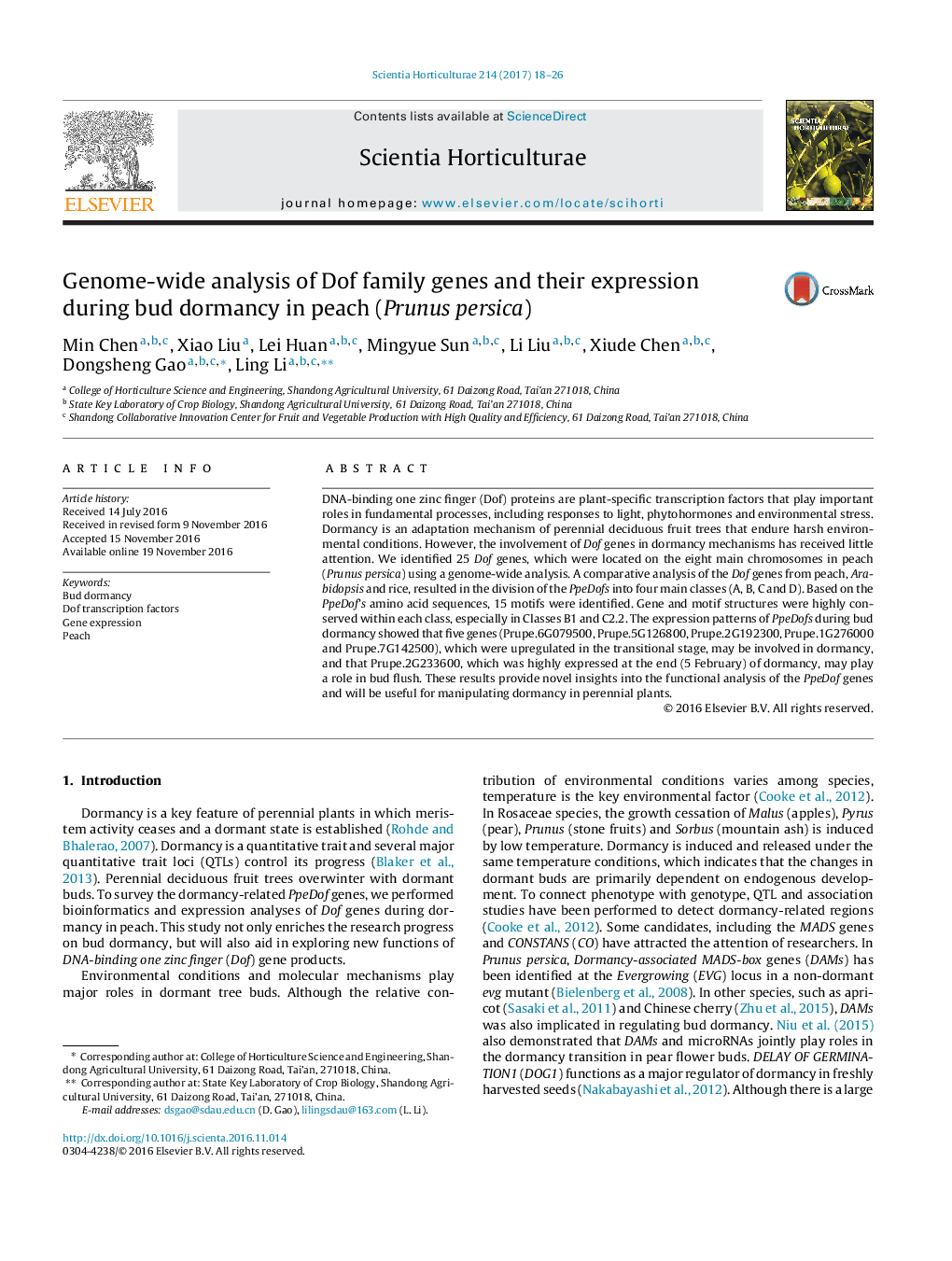| Article ID | Journal | Published Year | Pages | File Type |
|---|---|---|---|---|
| 5769788 | Scientia Horticulturae | 2017 | 9 Pages |
â¢25 PpeDof genes were identified in peach.â¢The PpeDof genes were divided into four main classes.â¢Prupe.6G079500, Prupe.5G126800, Prupe.2G192300, Prupe.1G276000, Prupe.7G142500, and Prupe.2G233600 may be involved in dormancy.
DNA-binding one zinc finger (Dof) proteins are plant-specific transcription factors that play important roles in fundamental processes, including responses to light, phytohormones and environmental stress. Dormancy is an adaptation mechanism of perennial deciduous fruit trees that endure harsh environmental conditions. However, the involvement of Dof genes in dormancy mechanisms has received little attention. We identified 25 Dof genes, which were located on the eight main chromosomes in peach (Prunus persica) using a genome-wide analysis. A comparative analysis of the Dof genes from peach, Arabidopsis and rice, resulted in the division of the PpeDofs into four main classes (A, B, C and D). Based on the PpeDof's amino acid sequences, 15 motifs were identified. Gene and motif structures were highly conserved within each class, especially in Classes B1 and C2.2. The expression patterns of PpeDofs during bud dormancy showed that five genes (Prupe.6G079500, Prupe.5G126800, Prupe.2G192300, Prupe.1G276000 and Prupe.7G142500), which were upregulated in the transitional stage, may be involved in dormancy, and that Prupe.2G233600, which was highly expressed at the end (5 February) of dormancy, may play a role in bud flush. These results provide novel insights into the functional analysis of the PpeDof genes and will be useful for manipulating dormancy in perennial plants.
